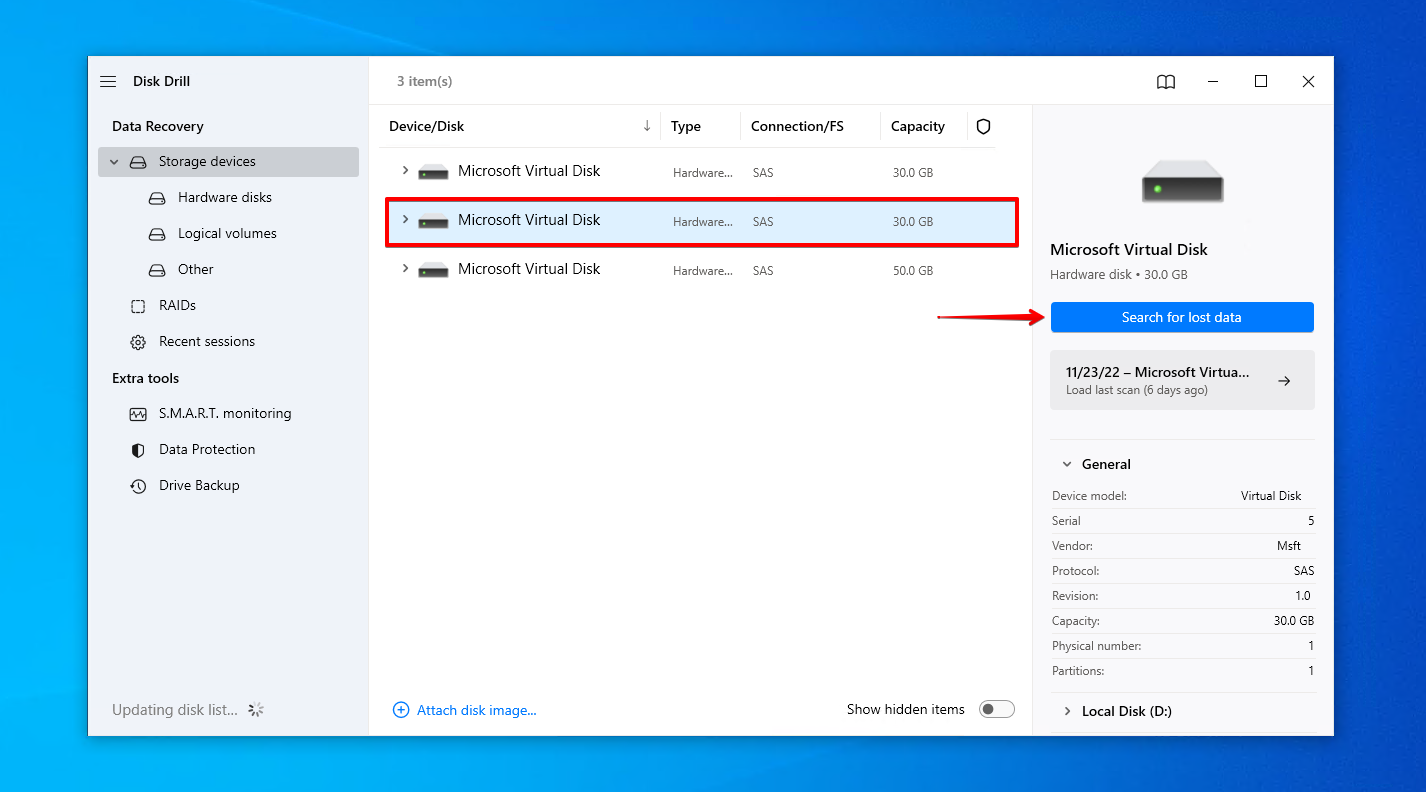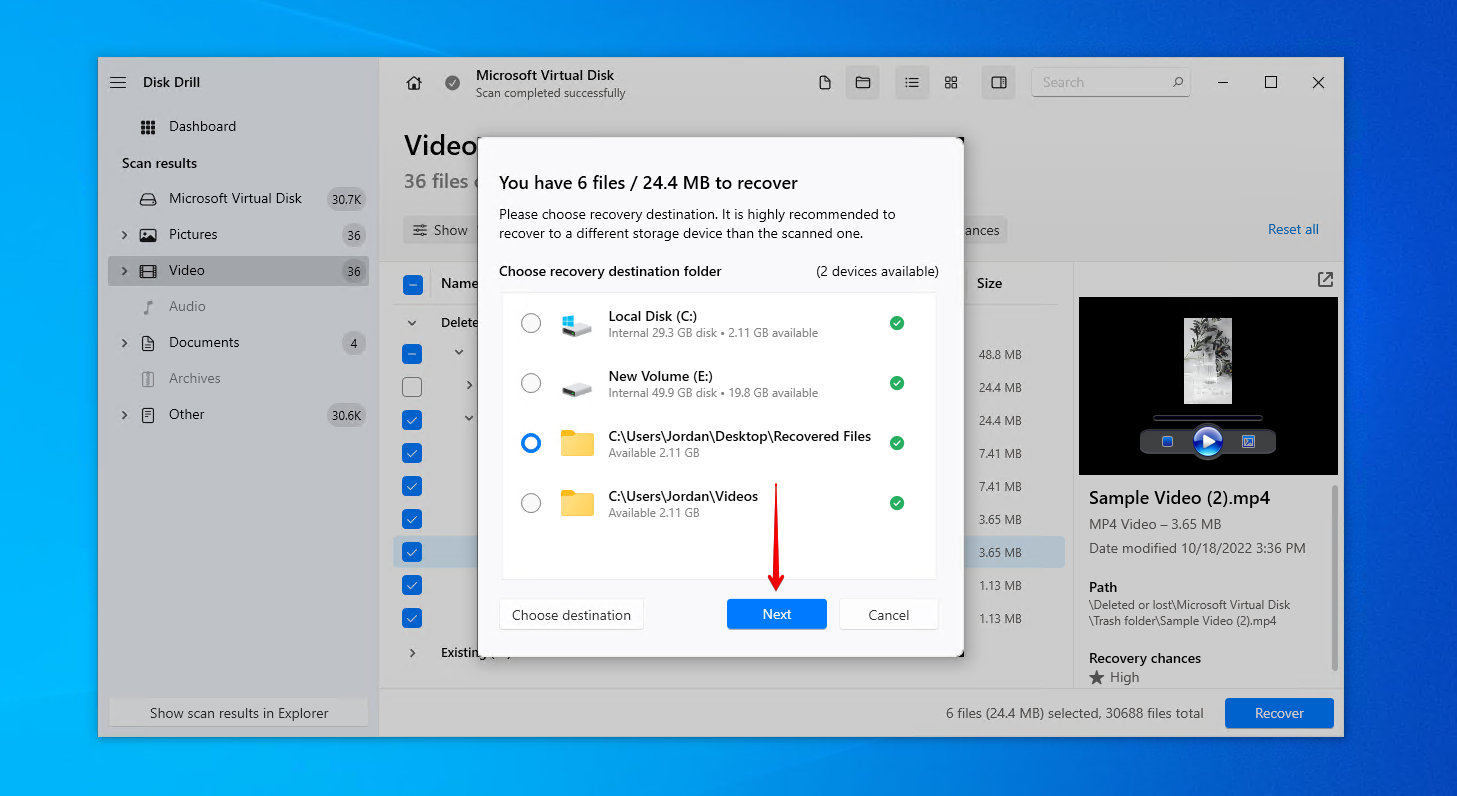
Have you just borrowed an SD card, transferred its files to your computer, and returned the card, only to find yourself hitting Ctrl + Z (Control + Z) and losing your copy? You don’t have to panic. You’re not the only one who has fallen prey to this functionality’s unintended consequences, like unintentional data loss.
In this guide, we’ll cover what Ctrl + Z is and what it does. We’ll also help you understand what you can do if you lose some files due to the Control + Z Windows command.
Table of Contents
What Does Control+Z Do on a Computer
The Ctrl + Z Windows keyboard shortcut is for the Undo command. This will undo your most recent action. For instance, if you move a file from one folder to another, pressing Ctrl + Z will move it back to its original location, effectively undoing the move. However, this doesn’t always work.
Although the Ctrl + Z shortcut is a convenient way to reverse mistakes, if you use it in the wrong instance, it can actually delete your data. For example, if you move data from a portable device (like an iPad) to your computer and issue the command after it has been locked, it’s likely that your data will disappear as it cannot return to its original location. Many Windows users have voiced their concerns after similar issues happened to them.
To familiarize yourself with other similar shortcuts that are commonly used, see the table below:
| Keyboard combination | Description |
| Ctrl + Z | Undo – The last action you made will be undone. This command can be used multiple times. |
| Ctrl + Y | Redo – The last Undo action will be reversed. |
| Ctrl + X | Cut – Cut a file, storing it in your clipboard until it is pasted elsewhere. |
| Ctrl + C | Copy – A copy of the selected file(s) or text is stored in the clipboard, ready to be pasted. |
| Ctrl + V | Paste – Paste the file(s) or text to the desired location. |
How to Recover Files Deleted With Control+Z
There are multiple ways to recover files lost due to the Ctrl + Z command. However, using File History, OneDrive, or Recycle Bin to attempt data recovery might not be helpful in this case. The deletion process using Ctrl + Z is abrupt, and file backups might not capture these data changes at all. The process also bypasses the Recycle Bin entirely, making it pointless to check the folder in the first place.
In this section, we have listed different solutions for recovering files deleted with Control + Z. Let’s explore each of them to know which method would work for you.
Method 1: Ctrl+Y Combination
The Ctrl + Y keyboard combination is for the Redo command. This will reverse the last Undo command and can be used multiple times, but only following the Undo command. This is useful if you want to quickly redo after pressing Ctrl + Z.
- Make sure the Windows where the mistake occurred is active.
- Press Ctrl + Y on your keyboard.
Method 2: Data Recovery Software
If your files aren’t restored with the Redo command, you should try data recovery software to restore your data. Disk Drill is a data recovery tool that can scan your drive for any lost data and allows you to recover the data to a safe location. Depending on your situation, it’s possible that the files were available on your drive momentarily, allowing Disk Drill to find them.
To avoid overwriting the lost data, ensure you’re installing Disk Drill to another drive or remove the drive and scan it from another computer.
- Download and install Disk Drill to another drive.
- Select the drive that your data disappeared from. Click Search for lost data.

- Click Review found items when the scan is finished.

- Mark the lost files for recovery. Use the filter buttons to organize the results and find exactly what you’re looking for. Then, click Recover.

- Select an appropriate recovery location and click Next.

Method 3: Microsoft Version History
Perhaps, instead of a file, you are working on a document, and you’ve accidentally removed its contents. Now, you can’t go back to the previous state using Ctrl + Z. If your file is in SharePoint in Microsoft 365, the Microsoft Version History feature should help you get back your data.
Microsoft Version History records every change in your file and stores a version you can go back to. However, the number of versions you can recover depends on your account. For example, you can only recover the last 25 versions if you’re signed in with a personal account.
To view the previous versions of your Office file, simply follow the steps below:
- Open the file.
- Click its title on the main menu at the top bar
- After that, click Version History.

- Here, you can browse for the version to restore.
- Next, choose a previous version and open it in a separate window first to make sure it’s the one you want to recover.
- Then, select Restore.
Conclusion
The ever-so-helpful Ctrl+Z keyboard shortcut for Undo can quickly become a nightmare if it accidentally deletes your data without leaving a trace. If you’re lucky, you can press Ctrl+Y on your keyboard to issue the Redo command. If this doesn’t work, seek out a backup from a backup utility like File History or cloud-based storage solution such as OneDrive.
Should no backup be available, you can always fall back on data recovery software like Disk Drill to scan your drive and recover the data for you.
FAQ
- Click Files, then click Options.
- Click Language.
- Select English in both boxes (in the Choose Display Language section and set both as default.
- Click OK and restart Word.




